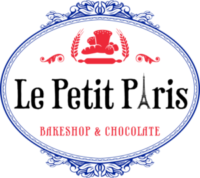The Croissant: A Crispy Emblem of French Pastry
Introduction
sit down with a steaming cup of coffee, and there, in front of you, a golden croissant, crispy on the outside, soft on the inside, fresh out of the oven. This moment of pleasure comes from a complex art and a rich history, that of the croissant, a true icon of French pastry.
The History of the Croissant:
The Legendary Origins of the Croissant
The croissant, this iconic pastry we cherish so much in France, has a fascinating history that dates long before its introduction to our country. Let’s discover together the evolution of this delicious product, from its legendary origins to its modern perfection at Le Petit Paris.
The history of the croissant begins in Austria, where it was invented to celebrate the victory over the Ottomans during the Siege of Vienna in 1683. The Viennese baker Peter Wendler is said to have created a pastry shaped like a crescent moon, a symbol present on Ottoman flags, to commemorate this historic victory. This is how the croissant, or “kipferl” in Austrian, was born.
Arrival in France and the Evolution of the Croissant
The croissant arrived in France around 1839 thanks to August Zang, an Austrian artillery officer, who opened a Viennese bakery in Paris at 92 Rue de Richelieu. Quickly, Parisians were seduced by this new pastry, and the croissant became a staple of French bakeries. Initially, the Austrian recipe consisted of a raised dough enriched with butter, milk, salt, and yeast, often supplemented with eggs.
The first recipe for the flaky croissant appeared in 1895, transforming this pastry into a light and airy laminated dough. Throughout the 19th century, the croissant was enriched with butter to become flaky, and in the early 20th century, it began to have different variations: flaky croissant, baker’s croissant, semi-flaky croissant, brioche croissant.
Croissant Making Technique
Making croissants is a delicate art that requires a master craftsman to execute each step precisely.
- Preparing the Détrempe: Making croissants begins with preparing the détrempe, a dough made from Label Rouge flour without additives from Moulins Foricher, water, milk, sugar, yeast, and salt. The quality of the ingredients is essential for a perfect base dough.
- Incorporating the Butter: Once the détrempe has rested, butter, preferably French Elle & Vire butter, is added. The butter must be of the same texture as the dough to be folded correctly.
- Tourage: The dough and butter are then folded several times to create the famous flaky layers. This process, called tourage, involves performing three turns on average to achieve about 27 layers.
- Shaping: The dough is rolled out and cut into triangles before being rolled to give the characteristic shape of the croissant. Each rolling must be precise to ensure uniform rising during baking.
- Fermentation: Shaped croissants are left to ferment in a controlled environment until they double in volume. This can take several hours, depending on temperature and humidity.
- Baking: Croissants are baked at high temperatures (about 190-200°C) until they are perfectly golden and crispy on the outside while remaining soft on the inside.
Nutritional Values
Below are the average nutritional values for a 65g croissant:
| Nutrient | Amount per Serving (65g) |
| Calories | 300 kcal |
| Total Fat | 17 g |
| – Saturated Fat | 10 g |
| Cholesterol | 45 mg |
| Sodium | 220 mg |
| Total Carbohydrates | 31 g |
| – Fiber | 1 g |
| – Sugars | 6 g |
| Protein | 5 g |
| Vitamin A | 10% |
| Calcium | 2% |
| Iron | 8% |
Source: USDA National Nutrient Database.
Our Croissants at Le Petit Paris
At “Le Petit Paris”, we are committed to offering you the most delicious and authentic croissants. We use the highest quality French ingredients to ensure an exceptional taste experience.
French Butter: We use Elle & Vire butter, renowned for its purity and incomparable taste. This butter enriches our croissants with its rich and delicate flavor.
French Flour: Our flour comes from Moulins Foricher, Label Rouge certified, and without additives, a guarantee of quality and tradition. This flour contributes to a supple dough that gives our croissants their perfect texture.
Every croissant you enjoy with us is the result of passionate and meticulous work, respecting traditional artisanal techniques. We are proud to offer you a product that embodies French authenticity and know-how.
A Small Disclaimer
Our croissants are designed to offer you an exceptional taste experience, rich in flavors. Enjoy them with peace of mind, but remember that they are also rich in butter and sugar. It is a pleasure to savor in moderation to maintain a healthy balance.
Conclusion
The croissant is much more than a simple bakery product. It is a sensory experience, a tradition, and a tribute to French craftsmanship. Whether you enjoy it alone or with a coffee, take the time to appreciate each crispy layer and every soft bite. At “Le Petit Paris”, we offer croissants worthy of this tradition, using superior quality ingredients and rigorous manufacturing techniques. Come discover the magic of artisanal croissants and let yourself be transported to France, croissant after croissant.
Sources and Thanks
- Farah, Berry. Patisserie21. For more information, visit Berry Farah’s site: patisserie21.com
- Elle & Vire
- Moulins Foricher
- USDA National Nutrient Database
A big thank you to Berry Farah, one of our favorite historical and technological authors, for his documented work on the history and techniques of croissant making.
Dicover this article about salt in bread: click here


Leave A Comment